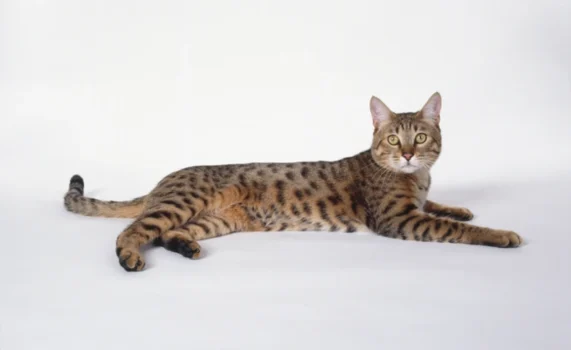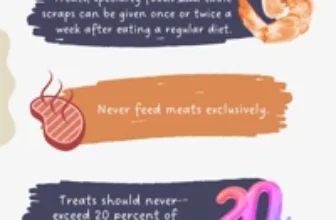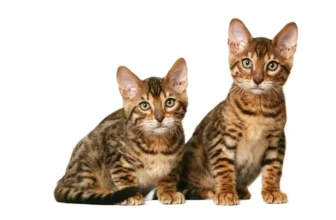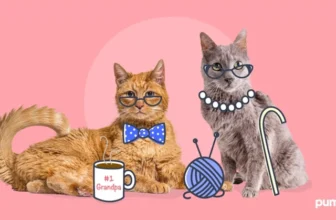Imagine looking at your beloved California Spangled cat and noticing a foul odor coming from their mouth. Or perhaps they’re struggling to eat their favorite cat food. Dental problems are not only uncomfortable for our feline friends but can also pose serious health risks. As a responsible cat owner, it’s important to be proactive in preventing dental issues in our cats. In this article, we’ll discuss why dental care is essential for California Spangled cats, the signs of dental problems to watch out for, and the steps you can take to prevent and care for dental problems in your cat. Let’s dive in and learn how to ensure our furry friends have healthy teeth and gums.
Why Dental Care is Important for California Spangled Cats
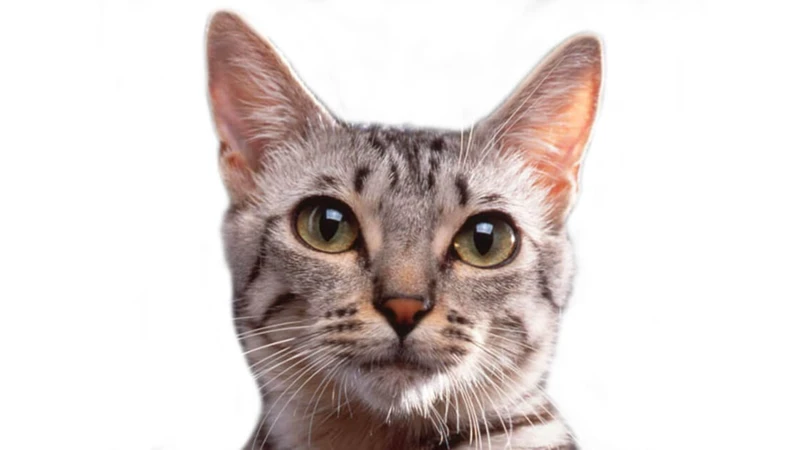
Taking care of your California Spangled cat’s dental health is essential for their overall well-being. Neglecting their teeth can lead to numerous health issues that can impact their quality of life. In fact, dental problems can even affect their vital organs such as the heart and kidneys, putting their life at risk. Additionally, California Spangled cats are prone to dental issues, making it crucial to take preventive measures. In this section, we will explore the importance of dental care and provide you with steps to prevent dental problems in your California Spangled cat. To ensure your feline friend stays healthy, it’s essential to follow these tips along with regular vet check-ups and a nutritious diet.
Dental Problems Can Affect Overall Health
Regular dental care for your California Spangled cat is important because dental problems can have an impact on their overall health. Periodontal disease, an infection of the gums and teeth, can lead to serious health problems if not treated. This infection can spread to other areas of the body. For example, oral bacteria can enter the bloodstream and cause damage to internal organs. This can lead to complications such as chronic kidney or liver disease. Additionally, oral pain from dental issues can cause your cat to stop eating, leading to malnutrition and weight loss.
One way to prevent periodontal disease in your cat is through regular dental check-ups. This involves having your California Spangled cat’s teeth and gums examined by a veterinarian at least once a year. During the check-up, your vet will be able to identify any early stages of gum disease, teeth that need to be extracted, or even signs of oral cancer. Early detection is key to preventing serious health problems.
In addition to regular vet check-ups, other preventive measures include brushing your cat’s teeth daily, feeding them a balanced diet, and providing dental treats and toys. Some cats may also benefit from water additives that promote oral health. Professional dental cleanings may also be necessary, especially if your cat already has advanced oral disease.
It’s important to note that after dental surgery, your cat may require special care. This may include pain management and a soft diet while they heal. Follow-up appointments with your vet will also be necessary to ensure that your cat’s recovery is going smoothly.
Dental problems can have a negative impact on your California Spangled cat’s overall health. Regular dental care, including check-ups, brushing, and a balanced diet, can help prevent periodontal disease and other oral health issues. Don’t underestimate the importance of dental care when it comes to the health and well-being of your furry friend.
California Spangled Cats are Prone to Dental Issues
California Spangled cats are prone to dental issues, just like any other cat breed. However, they may have some unique dental problems that are specific to their breed. One common issue seen in California Spangled cats is the misalignment of their teeth. The misaligned teeth can cause food particles to get stuck in between the teeth, leading to bacterial growth and ultimately, dental diseases. Other dental problems that are commonly seen in California Spangled cats include gingivitis, periodontitis, and tooth decay.
Gingivitis is the inflammation of the gums, which is caused by the buildup of plaque and tartar in the mouth. If left untreated, it can progress to periodontitis, which can cause tooth loss and even bone loss in severe cases. Tooth decay is another issue that California Spangled cats may face, especially if they are fed a diet high in sugar or carbohydrates.
Regular dental check-ups are essential to catch these dental problems early. It is recommended to take your California Spangled cat for a dental check-up at least once every year. During the check-up, the vet will perform a thorough examination of your cat’s teeth and gums and may recommend a dental cleaning if necessary.
There are also some preventative measures that you can take to minimize the risk of your California Spangled cat developing dental problems. These include feeding them a healthy diet low in carbohydrates and sugar, providing dental treats and toys to help clean their teeth, and adding a water additive to their drinking water to help eliminate bacteria in their mouth. Regular brushing of their teeth is also essential to maintaining good dental hygiene.
Regular dental care is crucial for the overall health and well-being of your California Spangled cat. By being vigilant about their dental health and taking preventative measures, you can help ensure that they maintain healthy teeth and gums throughout their life. If you want to learn more about other ways to keep your California Spangled cat healthy, you can check out this helpful guide on California Spangled cat health tips.
Signs of Dental Problems in California Spangled Cats
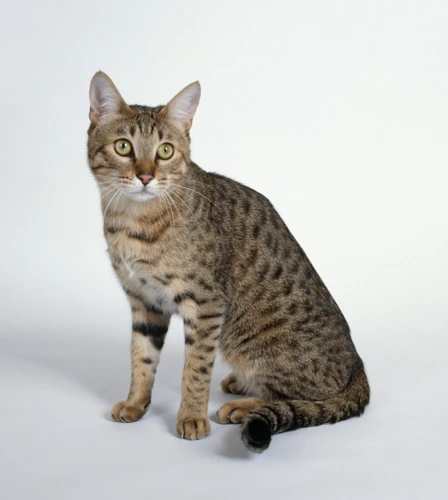
It’s essential to keep an eye out for any indications of dental issues in California Spangled cats, as dental problems can cause significant health issues if left untreated. These issues can be challenging to detect, as cats are known for being experts at hiding their pain. However, monitoring your cat’s dental health closely can help catch any issues early on and prevent them from becoming more severe. Here are several key signs to watch out for that may indicate a dental problem in your feline friend. Don’t hesitate to seek the advice of a veterinarian if your cat shows any of these symptoms.
Bad Breath
Bad breath is one of the most common signs of dental problems in California Spangled cats, and it can be a result of the buildup of bacteria in their teeth and gums. If you notice that your California Spangled cat has bad breath, it’s important to take action as soon as possible to prevent dental problems from worsening.
The first thing you can do is to start brushing your cat’s teeth regularly. This will help to remove any plaque or tartar buildup that may be causing their bad breath. You should also make sure to schedule regular vet check-ups so that your cat’s teeth and gums can be examined for any signs of dental problems.
In addition to brushing and regular check-ups, there are other things you can do to prevent dental problems and bad breath in your California Spangled cat. One of these is to make sure they are getting all the necessary vitamins and minerals, as a healthy diet is essential for dental health. You can give your cat T5 vitamins and minerals, which can help to support their overall health and dental health as well.
If your cat has bad breath due to dental issues, you may also want to consider giving them dental treats and toys. These can be effective at removing plaque and tartar buildup while keeping your cat entertained and happy. Water additives can also be helpful, as they can help to freshen your cat’s breath and promote dental health.
The key to preventing dental problems and bad breath in your California Spangled cat is to take a proactive approach. By paying attention to their dental health, providing a healthy diet, and working with your vet to develop a dental care plan, you can help to keep your cat’s teeth and gums healthy for years to come.
Difficulty Eating
A common sign of dental problems in California Spangled cats is difficulty eating. You may notice your cat avoiding certain types of food, eating less than usual, or even dropping food out of their mouth while trying to eat. This can be due to pain or discomfort in their mouth, so it is important to take action as soon as possible.
One way to assist your cat during mealtime is to provide soft, wet food instead of hard kibble. You may also want to try breaking up their meals into smaller, more frequent portions to make eating easier for them. Another option is to add water or a special broth to their food to make it more appealing and easier to swallow.
However, it is important to note that the best solution is to address the underlying dental issue. This may require a visit to the vet to determine the cause of the problem. Depending on the severity of the issue, your cat may need a dental cleaning or even tooth extraction.
Ensuring your cat receives regular dental care can help prevent these issues from arising in the first place. In addition to daily brushing and regular vet check-ups, providing dental treats and toys can help keep your cat’s teeth healthy. Additionally, adding water additives to your cat’s drinking water can help reduce plaque buildup and freshen their breath.
If your California Spangled cat does require dental surgery, it is important to provide the proper care afterwards. This may include pain management medication, a soft food diet, and follow-up appointments with the vet to ensure proper healing.
Keeping a close eye on changes in your cat’s eating habits can help detect dental issues early on. By taking the necessary steps to prevent and treat dental problems, you can help ensure your California Spangled cat stays healthy and happy for years to come.
Learn more about the importance of regular check-ups and preventative care for your California Spangled cat.
Excessive Drooling
Excessive drooling in California Spangled cats is another sign of potential dental problems. If you notice your cat is drooling excessively, it may be a sign that she is experiencing pain or discomfort in her mouth. Some cats may drool due to nausea caused by dental problems.
On the other hand, if your cat is drooling accompanied by difficulty eating, it is the best and most urgent time to visit a veterinarian. This could be a sign of periodontal disease or another serious dental issue that requires immediate attention.
Table:
| Signs of Excessive Drooling | Possible Causes |
|---|---|
| Excessive drooling | Indication of pain or discomfort related to the mouth, nausea caused by dental issues |
| Difficulty Eating | A sign of periodontal disease |
Regular dental care can help prevent dental issues that lead to excessive drooling. It is advisable to incorporate daily brushing into your cat’s routine as well as providing regular dental check-ups with your vet. A proper diet and nutrition can help reduce dental problems as well. If you notice your California Spangled cat exhibiting signs of dental problems, be sure to visit your veterinarian as soon as possible.
If you are looking for more natural alternatives to dental care, there are various alternative healthcare options for cats that can be consulted. For instance, some natural supplements, such as vitamins and minerals, can be added to your cat’s diet to help promote better dental health. For more information, visit our post on vitamins and minerals for California Spangled cats.
Visible Tartar or Discolored Teeth
It’s important to keep an eye out for visible tartar or discolored teeth in your California Spangled cat. These can be signs of dental problems that may need medical attention. Tartar buildup can be caused by plaque that hardens over time, resulting in a yellow or brown coating on the teeth. Discolored teeth may indicate decay or infection.
If you notice either of these issues in your cat, it’s important to schedule a vet appointment. Your cat may need a dental cleaning to remove the buildup of tartar and plaque. In some cases, extraction of teeth may be necessary to prevent further infection.
To prevent tartar and discoloration from occurring in the first place, it’s important to incorporate dental care into your cat’s daily routine. This can include regular brushing, dental treats and toys, and water additives specifically designed to promote dental health.
It’s also important to pay attention to your cat’s diet and nutrition to maintain their overall health. Providing your cat with a balanced diet rich in nutrients can help keep their teeth healthy. You can learn more about healthy diet options for your California Spangled cat on our website.
Finally, regular vet check-ups can help catch dental problems early on and prevent more serious issues from developing. In addition to dental check-ups, regular vet visits can help identify other health concerns your cat may have. Learn more about the importance of regular vet visits for your California Spangled cat by visiting our page on vet visits and spaying and neutering.
Incorporating these preventative measures into your cat’s routine can help prevent dental problems and promote better overall health. And if visible tartar or discolored teeth do occur, be sure to schedule a vet appointment as soon as possible to address the issue.
Preventing Dental Problems
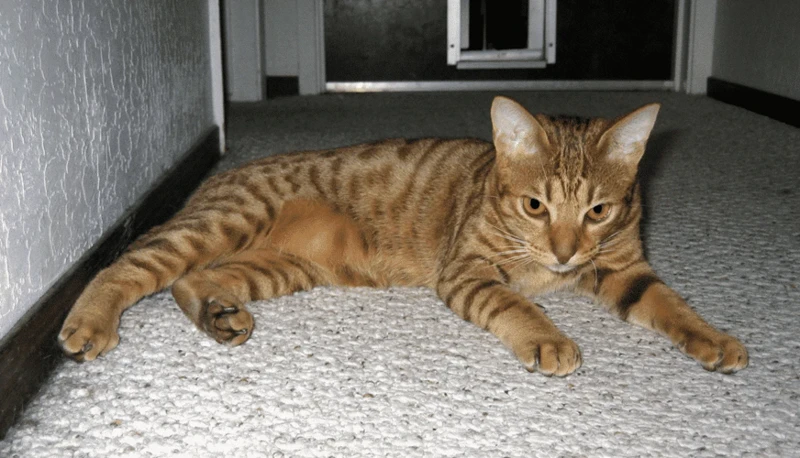
It’s important for cat owners to take preventative measures when it comes to their California Spangled Cat’s dental health in order to avoid more serious issues down the road. By incorporating a few simple practices into your cat’s daily routine, you can greatly reduce the risk of dental problems and ensure a healthy and happy cat. Here are some effective ways to prevent dental problems in your California Spangled Cat.
Daily Brushing
Regular brushing is the most important step in preventing dental problems for your California Spangled cat. Daily brushing can help remove plaque and food particles before they have a chance to become tartar and cause issues for your cat’s teeth and gums. Start by getting your cat used to the sensation of having their teeth brushed. You can do this by gently massaging their gums with your finger. Once your cat is comfortable, you can start using a toothbrush designed specifically for cats, like the Petrodex Dental Care Kit. Use a toothpaste made for cats like Virbac CET Enzymatic Toothpaste to brush your cat’s teeth.
Here are some tips for daily brushing:
- Choose a time when your cat is relaxed, such as after a meal or a nap.
- Gently lift your cat’s lip to expose their teeth and gums.
- Hold the toothbrush at a 45-degree angle to your cat’s teeth and brush in a circular motion.
- Pay special attention to the back teeth, which are more prone to tartar buildup.
- End on a positive note by giving your cat a treat or some praise.
Regular brushing can help keep your California Spangled cat’s teeth and gums healthy, preventing painful dental problems in the future. If you notice any issues with your cat’s dental health despite your brushing efforts, make an appointment with your veterinarian for an exam. It is possible that your cat may have underlying health issues, such as allergies or other alternative healthcare options that may be contributing to their dental problems.
Regular Vet Check Ups
Regular vet check-ups are an essential component of maintaining the dental health of your California Spangled cat. It is recommended to visit a veterinarian at least once a year for a routine check-up. During these visits, the veterinarian will assess the overall health of your cat, including their teeth and gums.
Regular dental exams are also necessary to identify any underlying dental issues such as periodontal disease, gingivitis, or tooth decay before they lead to severe health problems. Periodic X-rays may be needed to check the teeth’s root and bones to make sure they are healthy.
The veterinarian will assess your cat’s teeth for any signs of decay, broken teeth, or abnormalities. They will also check for gum disease, which is a common dental issue in cats, especially in older cats. Gum disease can lead to tooth loss and may also affect other organs such as the liver, kidneys, and heart if left untreated.
During the vet check-up, the veterinarian will advise you on any necessary procedures, such as a professional dental cleaning or oral surgery. The vet may also provide you with oral care solutions, such as dental chews, to help maintain your cat’s dental health between visits.
It’s also essential to discuss any concerns about your cat’s dental health during the vet’s check-up. If you notice any irregularity in your cat’s behavior or notice any signs of dental issues at home, like bad breath or difficulty eating, make sure to mention it during the appointment. The veterinarian may offer additional tips to help maintain your cat’s oral health at home.
By prioritizing regular vet check-ups, you can help prevent dental problems, address any arising dental issues, and catch any underlying health concerns early on. This will lead to a happier and healthier life for your California Spangled cat.
Remember, early detection can prevent severe problems later on, and always consult a professional veterinarian for any concerns you may have about your cat’s dental care.
Diet and Nutrition
To prevent dental problems in California Spangled cats, it’s important to pay attention to their diet and nutrition. A balanced diet can reduce the risk of dental issues, as well as other health problems. Here are some tips for ensuring your cat’s diet supports their dental health.
| Tip | Description |
|---|---|
| Choose quality food | Choose high-quality cat food that contains all the essential nutrients your cat needs. Look for food that has the Veterinary Oral Health Council (VOHC) seal of approval, which means it has been shown to reduce plaque and tartar. |
| Limit treats | Excessive treats can lead to weight gain and dental problems. Limit treats to no more than 10% of your cat’s daily caloric intake. |
| Provide fresh water | Make sure your cat has access to fresh, clean water at all times. Avoid giving your cat water that is too cold or too hot, as drastic temperature changes can cause tooth sensitivity. |
| Avoid sticky or hard foods | Sticky or hard foods can damage your cat’s teeth, so it’s best to avoid them. Examples include hard candies and sticky treats like caramel or taffy. |
| Consider a raw diet | Some cat owners believe that a raw diet can improve their cat’s dental health. However, it’s important to consult with a veterinarian or animal nutritionist before switching to a raw diet, as it can be difficult to ensure that your cat gets all the nutrients they need. |
It’s important to note that certain cat food ingredients can cause allergies in California Spangled cats. If you notice signs of allergies, such as itching or skin irritation, consult with a veterinarian. Additionally, alternative healthcare options, such as acupuncture or herbal supplements, may also support your cat’s overall health and dental health.
Dental Treats and Toys
Feeding your California Spangled cat treats and toys that are designed to promote dental health can be an excellent way to help prevent dental problems. Not only do these items help remove plaque and tartar buildup from your cat’s teeth, but they can also provide a fun and engaging way for your cat to improve their oral health.
Dental Treats: Dental treats are specifically designed to help keep your cat’s teeth healthy. These treats are often formulated with enzymes or ingredients that help break down plaque and tartar, making it easier for your cat’s teeth to stay healthy. Some popular dental treats for cats include Greenies and Temptations Dentabites.
Dental Toys: Dental toys can also be a great way to promote good oral health for your cat. These toys are designed to promote chewing and gnawing, which can help clean your cat’s teeth and remove plaque buildup. Some popular dental toys for cats include rubber dental toys and dental chews.
When choosing dental treats and toys for your California Spangled cat, be sure to look for options that are specifically designed for cats, as opposed to dogs. This is because cats have different nutritional needs and may not be able to properly digest certain ingredients that are common in dog dental treats and toys.
It’s important to note that while dental treats and toys can be helpful, they should not be the only method of dental care for your cat. Regular brushing, vet check-ups, and professional cleanings are also crucial for maintaining your cat’s oral health.
If your cat has certain food allergies or sensitivities, be sure to check the ingredients in dental treats to avoid any potential allergic reactions.
Incorporating dental treats and toys into your California Spangled cat’s routine is a fun and easy way to promote good oral health and prevent dental problems in the future.
Water Additives
One effective way to prevent dental problems in California Spangled Cats is by adding water additives to their drinking water. Water additives come in various forms, such as drops, gels, and solutions, and they can help maintain your cat’s oral health by reducing plaque and tartar buildup.
Benefits of Water Additives
Adding water additives to your cat’s drinking water can benefit their oral health in several ways. Firstly, water additives can help to minimize the formation of plaque and tartar on your cat’s teeth. Tartar buildup can be challenging to remove with just regular brushing, but water additives can help to break it down over time. Secondly, water additives can also freshen your cat’s breath. Thirdly, these additives can also help to kill harmful bacteria and reduce inflammation in the mouth.
However, it’s important to note that water additives should not be used as a substitute for regular dental care practices like brushing and professional cleanings. Instead, they should be used as an additional tool in your cat’s dental care routine.
Choosing the Right Water Additive
When selecting a water additive, it’s important to choose one that is specifically formulated for cats. Avoid using water additives that are designed for humans or dogs, as they may contain ingredients that are toxic to cats. Look for a water additive that is approved by the Veterinary Oral Health Council (VOHC). This ensures that the product has been rigorously tested and proven to be effective in reducing plaque and tartar buildup in cats.
Using Water Additives
To use a water additive, simply add the recommended amount of drops or solution to your cat’s drinking water. Be sure to follow the manufacturer’s instructions carefully, as using too much of the additive can be harmful to your cat. Additionally, it’s important to change your cat’s water frequently to avoid the buildup of bacteria.
Conclusion
Water additives can be a beneficial addition to your California Spangled Cat’s dental care routine. They can help to reduce plaque and tartar buildup, freshen your cat’s breath, and promote overall oral health. However, it’s important to remember that water additives should only be used in combination with regular brushing, professional cleanings, and a healthy diet. If you are unsure about which water additive to use or have any concerns about your cat’s dental health, consult with your veterinarian.
Alternative healthcare options can also aid in maintaining your California Spangled Cat’s overall health.
Professional Dental Cleanings
Regular professional dental cleanings are an essential part of maintaining your California Spangled cat’s dental health. Professional cleanings should be performed by a veterinarian or a veterinary dental specialist at least once a year, depending on your cat’s dental health. During the cleaning, the vet will remove any plaque and tartar that may have built up on your cat’s teeth. They will also examine and assess your cat’s mouth thoroughly to identify any potential dental problems.
Benefits of Professional Dental Cleanings
Professional dental cleanings can offer many benefits to your cat’s oral health. They can help prevent dental problems such as cavities, gum disease, and bad breath by removing plaque and tartar that can build up on your cat’s teeth. They can also help identify and treat dental issues before they become more severe and expensive to treat.
The Process of Professional Dental Cleanings
Professional dental cleanings for cats typically involve the following steps:
- Anesthesia – Your cat will need to be anesthetized during the cleaning process to ensure that they are comfortable and still during the procedure. This also allows the vet to thoroughly examine and clean their teeth and gums without causing your cat any discomfort.
- Dental Exam – The vet will conduct a thorough examination of your cat’s mouth, looking for signs of dental problems such as cavities, gum disease, and broken teeth.
- Cleaning – Once the exam is complete, the vet will use specialized tools to remove any plaque, tartar or buildup from your cat’s teeth. This process is called scaling and polishing, and it helps to restore your cat’s teeth to a healthy, clean state.
- Post Cleaning Exam – After the cleaning is complete, the vet will examine your cat’s mouth once more and may provide recommendations for further dental care.
It is important to note that professional dental cleanings for cats do require anesthesia, which can come with its own risks. However, these risks are typically considered low, and the benefits of professional cleanings typically outweigh the risks.
Conclusion
Professional dental cleanings are an important part of your California Spangled cat’s dental health. Regular cleanings can help prevent dental problems and ensure that any problems that do arise are identified and treated early on. Talk to your vet about how often your cat should receive professional dental cleanings, and be sure to follow their recommendations to keep your cat’s teeth healthy for years to come.
Caring for Your California Spangled Cat After Dental Surgery
Taking care of your California Spangled cat after dental surgery can be a challenging but necessary task. It’s natural to feel unsure or overwhelmed about what you should do next, but with proper guidance and planning, your cat can recover smoothly and get back to their healthy, happy self. In this section, we’ll discuss the crucial steps you should take to care for your cat after dental surgery, including pain management, post-op diet, and follow-up appointments. These measures will help ensure a successful recovery for your beloved feline friend.
Pain Management
After undergoing dental surgery, your California Spangled cat may experience pain and discomfort. Proper pain management is crucial to ensure a smooth and comfortable recovery process.
Here are some tips for pain management:
- Pain medication: Your vet may prescribe pain medication for your cat. It is important to follow the dosage instructions carefully and monitor your cat for any side effects. Never give your cat any over-the-counter pain medication without consulting with your vet first.
- Ice packs: Applying ice packs to your cat’s face for a few minutes at a time can help reduce swelling and ease pain. Make sure to wrap the ice pack in a towel to avoid direct contact with your cat’s skin.
- Soft food: After dental surgery, your cat may have difficulty eating hard food. Offer soft or wet food that is easy to chew and swallow.
- Extra attention: Your cat may feel scared or anxious after surgery. Offer plenty of love and attention to help ease their stress.
Remember to always follow your vet’s post-operative instructions carefully to ensure your cat’s pain is managed effectively.
Post-Op Diet
After dental surgery, it’s important to pay close attention to your California Spangled cat’s diet to ensure proper healing and reduce the risk of complications. Here are some dietary recommendations to follow during the post-op period:
| Dietary Recommendations | Explanation |
|---|---|
| Soft Foods Only: | For the first few days after surgery, feed your cat soft foods that are easy to chew and swallow. Avoid hard kibble that could irritate the surgical site and cause pain. |
| Smaller and More Frequent Meals: | Feed your cat smaller, more frequent meals throughout the day to reduce the risk of vomiting or nausea. This can also help increase their appetite if they are feeling a bit lethargic post-surgery. |
| High-Quality Protein: | Include protein-rich foods in their post-op diet to support healing and recovery. Lean meats or high-quality wet food can help boost their energy levels and provide essential nutrients. |
| Low Sodium: | Avoid foods that are high in sodium as it can cause inflammation and slow down the healing process. Instead, opt for low-sodium options or cook your cat’s meals at home with minimal seasoning. |
| Plenty of Water: | Ensure your cat has plenty of fresh, clean water to stay hydrated and aid in the healing process. Some cats may not want to drink immediately after surgery, so offer water frequently and encourage them to take small sips if possible. |
Remember to follow any dietary instructions given by your veterinarian and monitor your cat’s eating habits closely. Be patient and gentle with your cat during their recovery period and help them adjust to any changes in their diet or routine. By following these post-op dietary recommendations, you can help your California Spangled cat recover as smoothly and comfortably as possible.
Follow-Up Appointments
After your California Spangled cat undergoes dental surgery, it is crucial to schedule follow-up appointments with the vet to monitor their progress and ensure proper healing. These appointments will help ensure that any complications are addressed promptly and that your cat’s recovery is going smoothly.
How often should you schedule follow-up appointments?
The frequency of follow-up appointments will depend on several factors, such as the type of dental surgery your cat had and their overall health. Your vet will provide you with specific guidelines as to when you should bring your cat back for a check-up. Typically, follow-up appointments are recommended within a week or two of the procedure.
What happens during a follow-up appointment?
During a follow-up appointment, your vet will examine your cat’s mouth to ensure that the surgical site is healing properly. They may take X-rays to assess the bone healing and check for any signs of infection or other complications.
Your vet may also want to check your cat’s weight, as dental surgery can affect their ability to eat and maintain a healthy weight. They may also discuss any dietary or lifestyle changes that can aid in the healing process and ensure ongoing dental health.
What can you expect at home after a follow-up appointment?
Depending on your cat’s progress and the nature of the surgery, your vet may prescribe pain medication or antibiotics and provide instructions for administering them at home. They may also advise you on any non-medical measures you can take to aid in the healing process. It is important to follow these instructions carefully and continue monitoring your cat for any changes in behavior or signs of discomfort.
| Follow-Up Appointments | |
|---|---|
| Frequency | Within a week or two of surgery, depending on the specific case |
| What Happens | Examination of surgical site, X-rays, weight check, discussion of post-surgery care |
| At-Home Care | Administer medication as prescribed, monitor cat for changes in behavior or discomfort |
Follow-up appointments are a crucial part of ensuring your California Spangled cat’s dental health. By maintaining regular check-ups and adhering to your vet’s post-operative care instructions, you can help your furry companion heal and maintain a healthy smile for years to come.
Conclusion
In conclusion, taking care of your California Spangled Cat’s dental health is crucial for their overall wellbeing. Regular brushing, vet check-ups, and a proper diet can significantly reduce the likelihood of dental problems. It’s essential to keep an eye out for any signs of dental issues such as bad breath, difficulty eating, excessive drooling, and visible tartar or discolored teeth.
In addition to preventative measures, providing dental treats and toys and using water additives can also contribute to good oral hygiene. However, in some cases, professional dental cleanings or even surgery may be necessary.
If your cat does require dental surgery, it’s important to carefully follow post-op care instructions to ensure they recover properly. This includes managing their pain, feeding them soft foods, and attending all follow-up appointments.
Overall, incorporating dental care into your California Spangled Cat’s routine can help ensure they live a happy and healthy life. By being proactive and attentive to their dental health, you can provide them with the best possible care and minimize their risk of dental problems.
Frequently Asked Questions
1. How often should I brush my California Spangled Cat’s teeth?
It’s recommended to brush your cat’s teeth at least once a day to prevent dental problems.
2. Can my California Spangled Cat’s diet affect their dental health?
Yes, a cat’s diet can play a role in their dental health. Feeding them a diet high in protein and low in carbohydrates can help prevent dental issues.
3. When should I take my California Spangled Cat to the vet for a dental checkup?
You should take your cat to the vet at least once a year for a dental checkup. If you notice any signs of dental problems, such as bad breath or difficulty eating, you should make an appointment as soon as possible.
4. What kind of toys can I give my California Spangled Cat to promote dental health?
There are toys specifically designed to help clean your cat’s teeth, such as dental chews and interactive toys that encourage chewing. Look for toys that are non-toxic and durable.
5. Is it safe to use water additives for my California Spangled Cat’s dental health?
Yes, there are water additives that can help prevent dental issues in cats. Look for formulas that are specifically made for cats and consult with your vet before using.
6. How can I tell if my California Spangled Cat has dental problems?
Signs of dental problems in cats may include bad breath, difficulty eating, excessive drooling, and visible tartar or discolored teeth.
7. Can dental problems in California Spangled Cats lead to other health issues?
Yes, dental problems can affect your cat’s overall health. Untreated dental issues can lead to infections, pain, and even organ damage.
8. What should I do if my California Spangled Cat needs dental surgery?
It’s important to follow your vet’s post-operative instructions carefully. This may include managing your cat’s pain, feeding them a certain diet, and scheduling follow-up appointments.
9. Are professional dental cleanings necessary for California Spangled Cats?
Professional dental cleanings may be necessary if your cat has severe dental issues. Your vet can determine if a cleaning is necessary based on your cat’s individual needs.
10. Can I use human toothpaste on my California Spangled Cat?
No, you should never use human toothpaste on your cat. It may contain harmful ingredients that can be toxic to cats. Use toothpaste specifically formulated for cats and consult with your vet before use.

